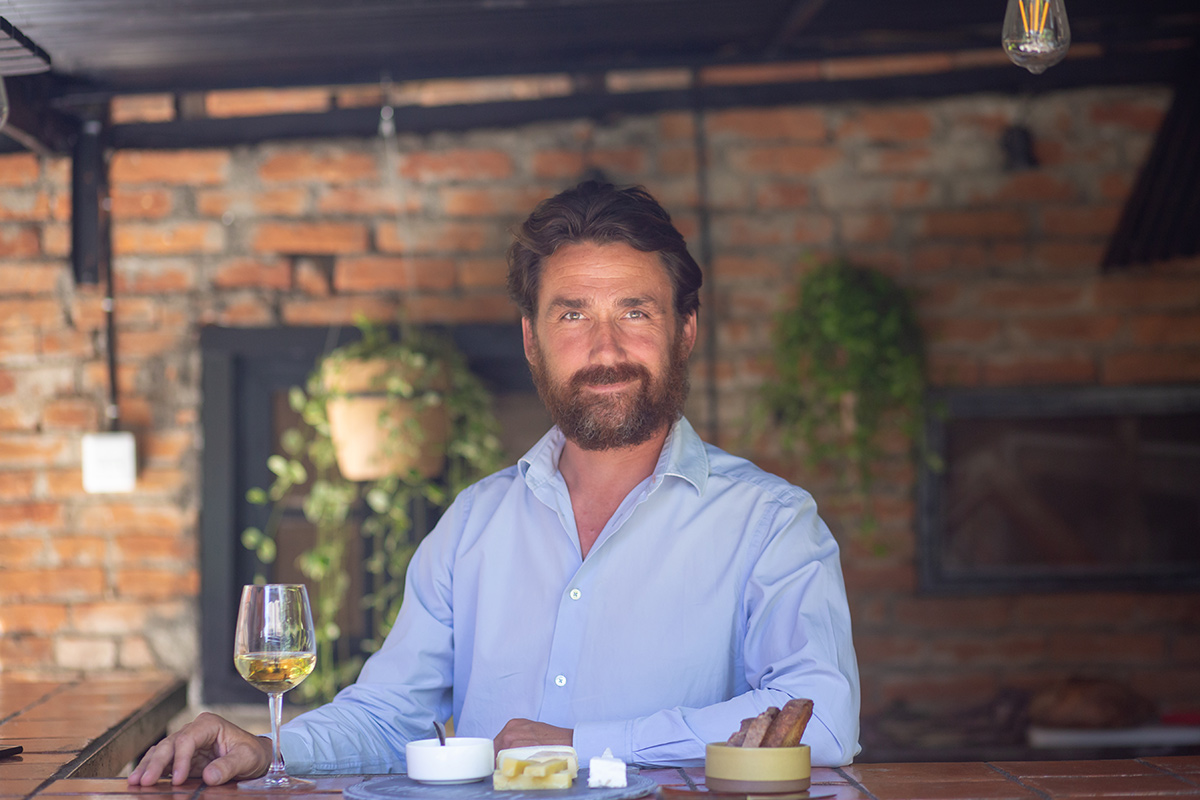
Francois Driard had been visiting Nepal since 1996 as a young tourist. He was an 18-year-old exploring the globe and mulling over existential questions. “I loved everything here: the alignments, the people, the climate,” he says underlining his reason to stay back. Besides, the fact that he came from near Paris where its grey most of the time helped to forge his love for Nepal where it’s sunny every day. “To wake up when its sunny induces quality in life”, he comments.
Driard went to a business school but it didn’t really interest him. Later, he became an academic journalist and his work took him to over 30 countries. However journalism did not hold his interest for long either. “After being a journalist for a few years I realised I didn’t want to work for anyone. I didn’t want to work in an office. I am an outdoor person and I like food and nature,” he explains. After three years of globetrotting on assignments as a journalist, he decided it was Nepal that had his soul. “And so, I came in January 2007,” he beams. Oozing with hope and positive energy upon arriving in Nepal, Driard rented a piece of land for ten years and built his dream house in Tokha, Chandeshwori. “And I dug a cave,” he says. He does not feel the need to explain the reference to the ‘cave’; the word hanging in the air.
“In mid-summer 2007, the same year that I came to Nepal, I went back to France for a short span to train in cheese making. I interned at a farm in the Alpines where they make cheese in the traditional way. Every morning the guys milk the cows with machines and they make the cheese. That’s how I was trained,” he narrates. “I am French and cheese is part of every meal, just like wine. After the main course, there’s salad and there’s a cheese platter. I always finish my meal with a cheese platter and forget dessert. Cheese making is very artisanal; it’s an ancient craft which means I wouldn’t have to invest much and I wouldn’t need to study too much because I never liked studying,” he reveals. And it actually worked for him.
He connects the dots. “After I returned, I dug the cheese cave by myself in a rice field and covered it with mud. That was my first cave.” In December 2007, he made his first batch of cheese for which he had collected 40 litres of milk from the neighbouring farmers. And in January 2008, Driard marched to the Hyatt Regency hotel to sell them his cheese. “I offered my cheese to them and said, “See, it’s cheaper and better than what you have been buying.’” Later, they came to visit the factory and liked what they saw and that is how Himalayan French Cheese got its first client.
Fifteen years down the line, Driard has two factories and makes 25 different varieties of cheese employing over 20 people. Every year, he tries to add one or two more varieties to his collection. Besides, he also designs new cheeses like the blue cheese which won super gold medal in France. “That made me very proud,” states the cheesemaker who now has hundreds of clients ranging from restaurants to supermarkets. Driard also sells his cheese in Pokhara. The company has been exporting to Japan and India too. In addition, they have two retail shops and sell at two farmers markets.
Himalayan French Cheese sells cheese that are a day old to three years old. They make mozzarella twice a week, and everything that’s made is delivered the next day. Saturdays are at the farmers market. Driard is said to have uplifted the farmers market culture in Kathmandu. Around 2008, there was a small farmers market at Summit Hotel where Francois used to sell his cheese, but he envisioned something bigger and approached 1905. Today he is present at the ones in Le Sherpa and Labim Mall.
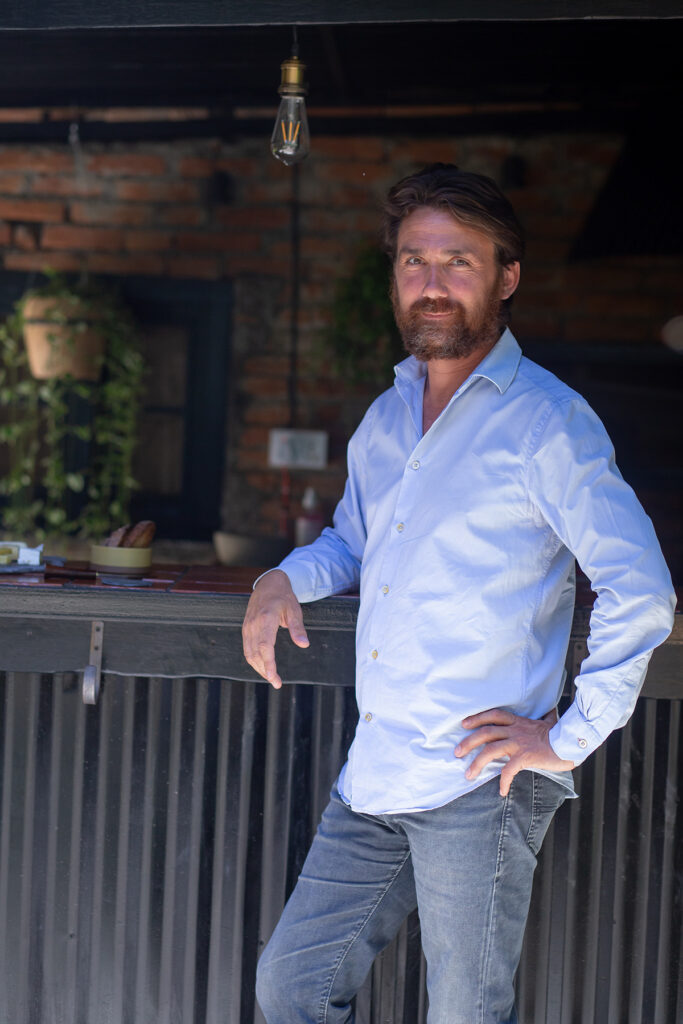 When he started his venture, Driard used to own some cows but he admits that it was not easy. So, instead they collect milk. “We work with a milk collector in Dhulikhel and so every morning he brings us the milk. We pasteurisSe it, cool it, and then we start the cheese making process. That’s for cow milk,” he states. Francois shares his displeasure at the cow milk market in Nepal. He complains that cows in Nepal are not free. The fact that their movement is restrained and grass is fetched and fed to them does not sit very well with him. According to him, a happy cow should be grazing until she’s full. “You don’t have many grazing cows in this country. You never see herds of cows,” he says. “Land is too expensive and scarce in mountainous countries.”
He then shifts his focus from cows to yaks. “It’s a different story for yaks. They graze in open space,” he says. “Last year we were collecting milk from about 15 families of herders who each morning would walk up to the factory or walk down depending on the season and bring us the milk. And that is really white gold.” He calls yak milk ‘white gold’. His face lights up when he talks about yaks. “It’s basically this very ancient animal transforming the grass and flowers of the mountain into very pure and concentrated milk which is obviously organic. There is nothing else than grass up there. Basically their milk is the taste of the region.”
Himalayan French Cheese has a factory at an altitude of 3,370 metres in the northern tip of Ramechhap between Jiri and Lukla. “It’s quite a trip,” he says, “We make cheese where the milk is because with 100 litres of milk you can make 10 kilos of cheese, more or less. So it doesn’t make sense to transport thousands of litres. That’s why the factory is in a remote location.” The factory in Ramechhap is for the yak cheese. For the cow cheese, they have a factory in Dhulikhel.
The Covid 19 pandemic did not spare the cheese business either. “We have lost about 50% of the business because we deal a lot with the big hotels and now the hotels are empty. So it will take time to recover. Actually, we have made it through the pandemic because of the two retail shops that I have. We have one in Jhamsikhel and another in Cafe Soma, Baluwatar. But we have lost a lot. Depending on the season, we collect between 300 and 600 litres of cow milk a day and about half that amount of yak milk.”
Addressing the elephant in the room, Driard says it will take time for Nepalis to add cheese to their palette. “I think it is like wine. Their appreciation for cheese is progressing. Ten years ago it was difficult to find a glass of red wine and Nepalis would drink whiskey or beer mainly and women would actually have glasses of sweeter wines. Now it’s changing. It’s the same with cheese. Not many Nepalis like a piece of stinky cheese the way I don’t prefer gundruk.”
However, thanks to Dairy Development Corporation and independent cheesemakers like Driard, cheese is gaining prominence in Nepali households. On his part, he has been trying to attract Nepalis to harder, edgier, more pungent cheese varieties. “Cheese is an acquired taste. But I also think that wine makes cheese taste better and cheese makes wine taste better. And it’s true that the trilogy — wine, cheese and bread is rather perfect, at least for a French man. And that’s also why I have decided to open these wine bars on both sides of town. I want to offer people what I like, how I like to eat and drink,” shares Driard.
Nepal is a very small market for artisan cheeses. There are only four people working in the sector. But everyone works on different things. He wants to pass the word concerning his hunt for goat milk because he would like to start a goat cheese factory. “I am very interested but all Nepali goats are meat goats. There’s no dairy goat in Nepal. It’s very difficult, but that’s the next step.”
On the subject of doing business in Nepal, Driard says, “It’s been very hard, but I have got a very, very good advisor who helps me with most of my issues and takes care of all my relationships with the government. You have to be diplomatic in your dealings, things move very slowly in Nepal, but even after 15 years here, I am too impatient. I think in Nepal everything is possible. I mean, when I came 15 years ago, I said to myself that there are so many things left to be done in Nepal. At one point every morning, I had a new idea. As an entrepreneur, I feel very lucky to be in Nepal.”
Read this also:
We are fundamentally human beings. I never define leadership in gender terms.
When he started his venture, Driard used to own some cows but he admits that it was not easy. So, instead they collect milk. “We work with a milk collector in Dhulikhel and so every morning he brings us the milk. We pasteurisSe it, cool it, and then we start the cheese making process. That’s for cow milk,” he states. Francois shares his displeasure at the cow milk market in Nepal. He complains that cows in Nepal are not free. The fact that their movement is restrained and grass is fetched and fed to them does not sit very well with him. According to him, a happy cow should be grazing until she’s full. “You don’t have many grazing cows in this country. You never see herds of cows,” he says. “Land is too expensive and scarce in mountainous countries.”
He then shifts his focus from cows to yaks. “It’s a different story for yaks. They graze in open space,” he says. “Last year we were collecting milk from about 15 families of herders who each morning would walk up to the factory or walk down depending on the season and bring us the milk. And that is really white gold.” He calls yak milk ‘white gold’. His face lights up when he talks about yaks. “It’s basically this very ancient animal transforming the grass and flowers of the mountain into very pure and concentrated milk which is obviously organic. There is nothing else than grass up there. Basically their milk is the taste of the region.”
Himalayan French Cheese has a factory at an altitude of 3,370 metres in the northern tip of Ramechhap between Jiri and Lukla. “It’s quite a trip,” he says, “We make cheese where the milk is because with 100 litres of milk you can make 10 kilos of cheese, more or less. So it doesn’t make sense to transport thousands of litres. That’s why the factory is in a remote location.” The factory in Ramechhap is for the yak cheese. For the cow cheese, they have a factory in Dhulikhel.
The Covid 19 pandemic did not spare the cheese business either. “We have lost about 50% of the business because we deal a lot with the big hotels and now the hotels are empty. So it will take time to recover. Actually, we have made it through the pandemic because of the two retail shops that I have. We have one in Jhamsikhel and another in Cafe Soma, Baluwatar. But we have lost a lot. Depending on the season, we collect between 300 and 600 litres of cow milk a day and about half that amount of yak milk.”
Addressing the elephant in the room, Driard says it will take time for Nepalis to add cheese to their palette. “I think it is like wine. Their appreciation for cheese is progressing. Ten years ago it was difficult to find a glass of red wine and Nepalis would drink whiskey or beer mainly and women would actually have glasses of sweeter wines. Now it’s changing. It’s the same with cheese. Not many Nepalis like a piece of stinky cheese the way I don’t prefer gundruk.”
However, thanks to Dairy Development Corporation and independent cheesemakers like Driard, cheese is gaining prominence in Nepali households. On his part, he has been trying to attract Nepalis to harder, edgier, more pungent cheese varieties. “Cheese is an acquired taste. But I also think that wine makes cheese taste better and cheese makes wine taste better. And it’s true that the trilogy — wine, cheese and bread is rather perfect, at least for a French man. And that’s also why I have decided to open these wine bars on both sides of town. I want to offer people what I like, how I like to eat and drink,” shares Driard.
Nepal is a very small market for artisan cheeses. There are only four people working in the sector. But everyone works on different things. He wants to pass the word concerning his hunt for goat milk because he would like to start a goat cheese factory. “I am very interested but all Nepali goats are meat goats. There’s no dairy goat in Nepal. It’s very difficult, but that’s the next step.”
On the subject of doing business in Nepal, Driard says, “It’s been very hard, but I have got a very, very good advisor who helps me with most of my issues and takes care of all my relationships with the government. You have to be diplomatic in your dealings, things move very slowly in Nepal, but even after 15 years here, I am too impatient. I think in Nepal everything is possible. I mean, when I came 15 years ago, I said to myself that there are so many things left to be done in Nepal. At one point every morning, I had a new idea. As an entrepreneur, I feel very lucky to be in Nepal.”
Read this also:
We are fundamentally human beings. I never define leadership in gender terms.
 When he started his venture, Driard used to own some cows but he admits that it was not easy. So, instead they collect milk. “We work with a milk collector in Dhulikhel and so every morning he brings us the milk. We pasteurisSe it, cool it, and then we start the cheese making process. That’s for cow milk,” he states. Francois shares his displeasure at the cow milk market in Nepal. He complains that cows in Nepal are not free. The fact that their movement is restrained and grass is fetched and fed to them does not sit very well with him. According to him, a happy cow should be grazing until she’s full. “You don’t have many grazing cows in this country. You never see herds of cows,” he says. “Land is too expensive and scarce in mountainous countries.”
He then shifts his focus from cows to yaks. “It’s a different story for yaks. They graze in open space,” he says. “Last year we were collecting milk from about 15 families of herders who each morning would walk up to the factory or walk down depending on the season and bring us the milk. And that is really white gold.” He calls yak milk ‘white gold’. His face lights up when he talks about yaks. “It’s basically this very ancient animal transforming the grass and flowers of the mountain into very pure and concentrated milk which is obviously organic. There is nothing else than grass up there. Basically their milk is the taste of the region.”
Himalayan French Cheese has a factory at an altitude of 3,370 metres in the northern tip of Ramechhap between Jiri and Lukla. “It’s quite a trip,” he says, “We make cheese where the milk is because with 100 litres of milk you can make 10 kilos of cheese, more or less. So it doesn’t make sense to transport thousands of litres. That’s why the factory is in a remote location.” The factory in Ramechhap is for the yak cheese. For the cow cheese, they have a factory in Dhulikhel.
The Covid 19 pandemic did not spare the cheese business either. “We have lost about 50% of the business because we deal a lot with the big hotels and now the hotels are empty. So it will take time to recover. Actually, we have made it through the pandemic because of the two retail shops that I have. We have one in Jhamsikhel and another in Cafe Soma, Baluwatar. But we have lost a lot. Depending on the season, we collect between 300 and 600 litres of cow milk a day and about half that amount of yak milk.”
Addressing the elephant in the room, Driard says it will take time for Nepalis to add cheese to their palette. “I think it is like wine. Their appreciation for cheese is progressing. Ten years ago it was difficult to find a glass of red wine and Nepalis would drink whiskey or beer mainly and women would actually have glasses of sweeter wines. Now it’s changing. It’s the same with cheese. Not many Nepalis like a piece of stinky cheese the way I don’t prefer gundruk.”
However, thanks to Dairy Development Corporation and independent cheesemakers like Driard, cheese is gaining prominence in Nepali households. On his part, he has been trying to attract Nepalis to harder, edgier, more pungent cheese varieties. “Cheese is an acquired taste. But I also think that wine makes cheese taste better and cheese makes wine taste better. And it’s true that the trilogy — wine, cheese and bread is rather perfect, at least for a French man. And that’s also why I have decided to open these wine bars on both sides of town. I want to offer people what I like, how I like to eat and drink,” shares Driard.
Nepal is a very small market for artisan cheeses. There are only four people working in the sector. But everyone works on different things. He wants to pass the word concerning his hunt for goat milk because he would like to start a goat cheese factory. “I am very interested but all Nepali goats are meat goats. There’s no dairy goat in Nepal. It’s very difficult, but that’s the next step.”
On the subject of doing business in Nepal, Driard says, “It’s been very hard, but I have got a very, very good advisor who helps me with most of my issues and takes care of all my relationships with the government. You have to be diplomatic in your dealings, things move very slowly in Nepal, but even after 15 years here, I am too impatient. I think in Nepal everything is possible. I mean, when I came 15 years ago, I said to myself that there are so many things left to be done in Nepal. At one point every morning, I had a new idea. As an entrepreneur, I feel very lucky to be in Nepal.”
Read this also:
We are fundamentally human beings. I never define leadership in gender terms.
When he started his venture, Driard used to own some cows but he admits that it was not easy. So, instead they collect milk. “We work with a milk collector in Dhulikhel and so every morning he brings us the milk. We pasteurisSe it, cool it, and then we start the cheese making process. That’s for cow milk,” he states. Francois shares his displeasure at the cow milk market in Nepal. He complains that cows in Nepal are not free. The fact that their movement is restrained and grass is fetched and fed to them does not sit very well with him. According to him, a happy cow should be grazing until she’s full. “You don’t have many grazing cows in this country. You never see herds of cows,” he says. “Land is too expensive and scarce in mountainous countries.”
He then shifts his focus from cows to yaks. “It’s a different story for yaks. They graze in open space,” he says. “Last year we were collecting milk from about 15 families of herders who each morning would walk up to the factory or walk down depending on the season and bring us the milk. And that is really white gold.” He calls yak milk ‘white gold’. His face lights up when he talks about yaks. “It’s basically this very ancient animal transforming the grass and flowers of the mountain into very pure and concentrated milk which is obviously organic. There is nothing else than grass up there. Basically their milk is the taste of the region.”
Himalayan French Cheese has a factory at an altitude of 3,370 metres in the northern tip of Ramechhap between Jiri and Lukla. “It’s quite a trip,” he says, “We make cheese where the milk is because with 100 litres of milk you can make 10 kilos of cheese, more or less. So it doesn’t make sense to transport thousands of litres. That’s why the factory is in a remote location.” The factory in Ramechhap is for the yak cheese. For the cow cheese, they have a factory in Dhulikhel.
The Covid 19 pandemic did not spare the cheese business either. “We have lost about 50% of the business because we deal a lot with the big hotels and now the hotels are empty. So it will take time to recover. Actually, we have made it through the pandemic because of the two retail shops that I have. We have one in Jhamsikhel and another in Cafe Soma, Baluwatar. But we have lost a lot. Depending on the season, we collect between 300 and 600 litres of cow milk a day and about half that amount of yak milk.”
Addressing the elephant in the room, Driard says it will take time for Nepalis to add cheese to their palette. “I think it is like wine. Their appreciation for cheese is progressing. Ten years ago it was difficult to find a glass of red wine and Nepalis would drink whiskey or beer mainly and women would actually have glasses of sweeter wines. Now it’s changing. It’s the same with cheese. Not many Nepalis like a piece of stinky cheese the way I don’t prefer gundruk.”
However, thanks to Dairy Development Corporation and independent cheesemakers like Driard, cheese is gaining prominence in Nepali households. On his part, he has been trying to attract Nepalis to harder, edgier, more pungent cheese varieties. “Cheese is an acquired taste. But I also think that wine makes cheese taste better and cheese makes wine taste better. And it’s true that the trilogy — wine, cheese and bread is rather perfect, at least for a French man. And that’s also why I have decided to open these wine bars on both sides of town. I want to offer people what I like, how I like to eat and drink,” shares Driard.
Nepal is a very small market for artisan cheeses. There are only four people working in the sector. But everyone works on different things. He wants to pass the word concerning his hunt for goat milk because he would like to start a goat cheese factory. “I am very interested but all Nepali goats are meat goats. There’s no dairy goat in Nepal. It’s very difficult, but that’s the next step.”
On the subject of doing business in Nepal, Driard says, “It’s been very hard, but I have got a very, very good advisor who helps me with most of my issues and takes care of all my relationships with the government. You have to be diplomatic in your dealings, things move very slowly in Nepal, but even after 15 years here, I am too impatient. I think in Nepal everything is possible. I mean, when I came 15 years ago, I said to myself that there are so many things left to be done in Nepal. At one point every morning, I had a new idea. As an entrepreneur, I feel very lucky to be in Nepal.”
Read this also:
We are fundamentally human beings. I never define leadership in gender terms.
Published Date: September 27, 2021, 12:00 am
Post Comment
E-Magazine
RELATED Innovation

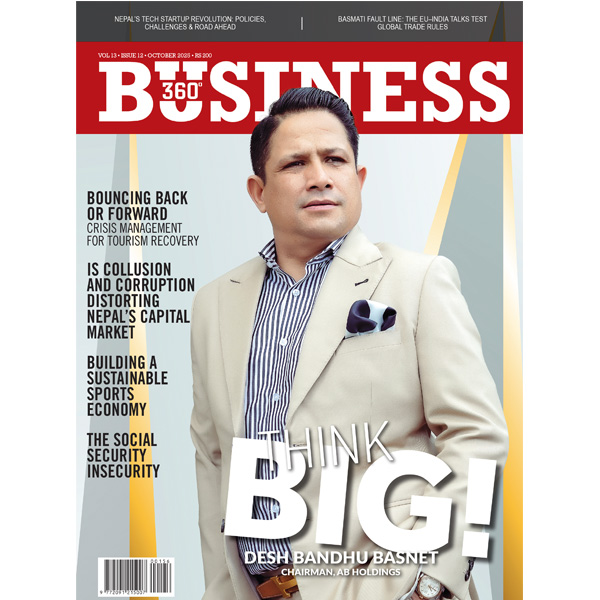
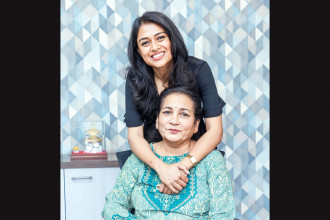
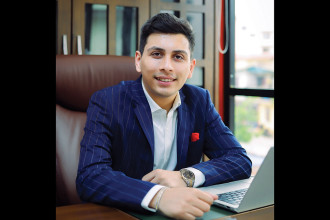
-1747384393.jpg)
-1744695387.jpg)